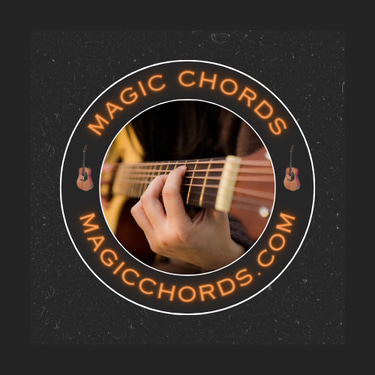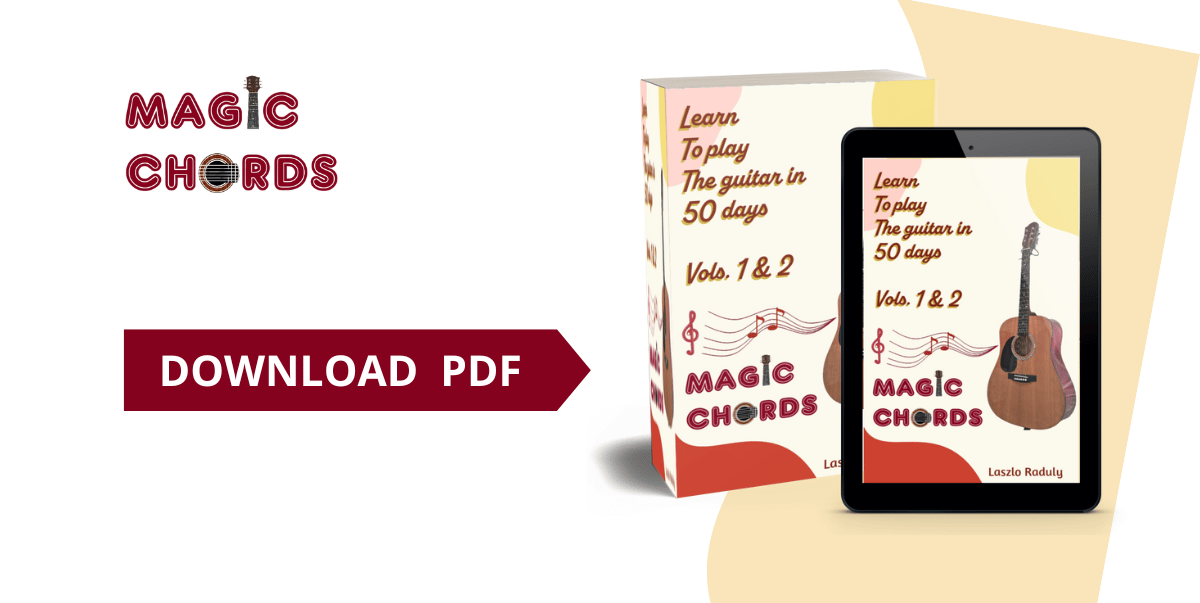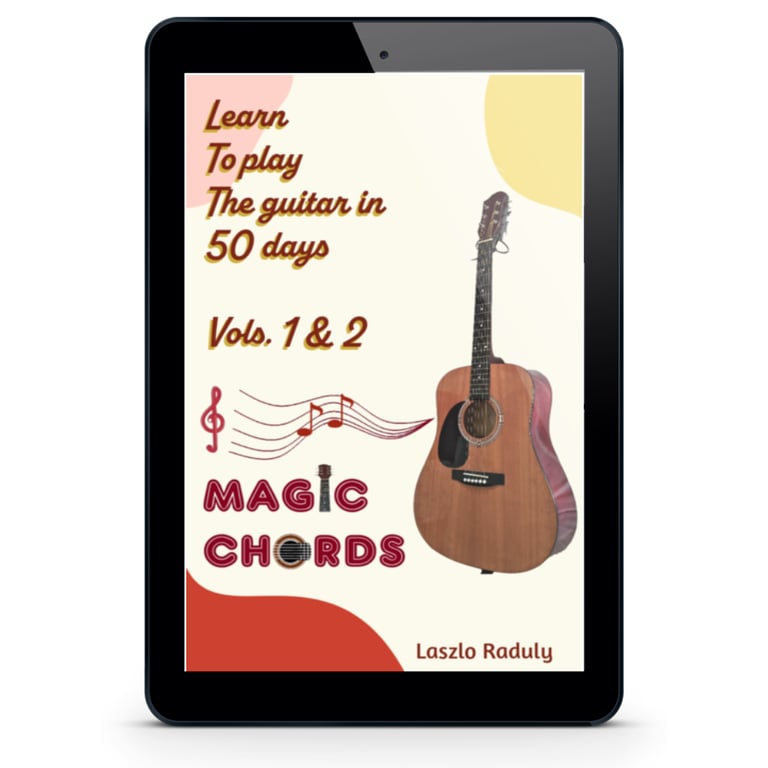
Top Guitar Chords for Beginners’ Success
Guitar chords are a fundamental element of guitar playing and are indispensable in most genres of music.


Chords are the cornerstones of guitar playing, allowing you to easily accompany songs and enrich your music with harmonies. Exploring the world of chords is an exciting and motivating part of learning the guitar, as a few basic chords are enough to play many popular songs.
In this chapter you will learn the basics of chords and how to play them correctly on the guitar neck. The diagrams for each chord visually show the position of your fingers, so you can easily learn the correct positions. Basic chords such as C major, G major, and A minor are great starting points because they are simple and appear in many songs.
🎸 Topic Content:
As you learn chords, rhythm becomes key. The exercises in this chapter will help you coordinate your strumming and chord changes so that your playing is smooth and enjoyable. As you learn more and more chords, your options expand. Enter the world of chords and discover how you can turn music into your own melodies! Below you can familiarize yourself with the basic chords. We'll show you where they are on the guitar and exactly how to catch them.
And how can you learn chords in a short time? Click: Learn Chords Effectively
The A major and A minor chords
A major chord
The A major chord is one of the most commonly used basic chords, easy to learn and found in many popular songs. This chord gives the music a bright, cheerful sound, making it an ideal choice for beginners.
To play A major, place your first, second, and third fingers on the fretboard of the guitar on the notes E, C♯, and A of the second fret, i.e., on the fifth, fourth, and third strings. It is important that your fingers are close to each other, but not blocking each other.
The lowest sixth string does not need to be played for this chord, so make sure you only strum the bottom five strings when playing. Practice the chord slowly, then try connecting it with other basic chords.
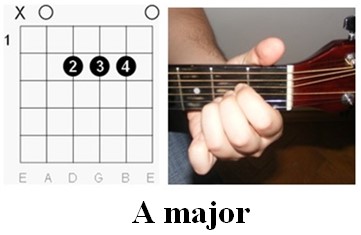

A minor chord
The A minor chord is also important among the basic chords, which gives the music a deep, melancholic sound. This chord is often found in ballads and soulful tunes, so it's essential for beginner guitarists.
To play A minor, place your first finger on the second string of the first fret (H-string), your second finger on the fourth string of the second fret (D-string), and your third finger on the third string of the second fret (G-string). Make sure your fingers are firmly but loosely placed on the strings.
When playing the chord, you only pick the bottom five strings, leaving out the deepest sixth string. Practice the A minor chord slowly and try connecting it with other basic chords like E major or C major to make your playing fluid.
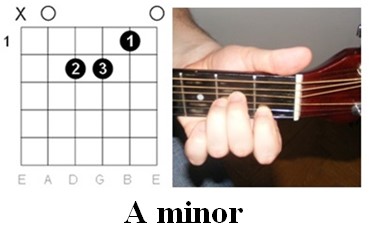

The C major and C minor chords
C major chord
The C major chord is a cornerstone of guitar chords playing and an essential chord for beginners to learn. Known for its warm, open sound, C major is a staple in countless songs across genres, from pop and folk to rock and country. While its finger positioning might feel slightly challenging at first, mastering this chord is a rewarding milestone for any aspiring guitarist.
To play C major, place your first finger on the second string of the first fret (B-string), your second finger on the fourth string of the second fret (D-string), and your third finger on the fifth string of the third fret (A-string). It is an excellent chord for building finger dexterity and accuracy, as it requires stretching and precise placement. Practicing C major will not only improve your technique but also prepare you for other common chords and progressions.
As you incorporate the C major chord into your playing, you will discover its versatility and importance in creating harmonious melodies.
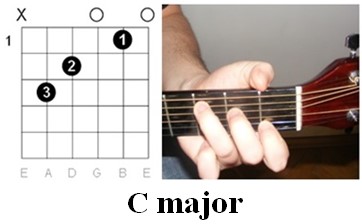

C minor chord
The C minor chord is a beautiful and emotive chord that adds depth and drama to your guitar playing. Its rich, melancholic tone is a staple in various music styles, including rock, classical, and ballads. Although it is slightly more challenging for beginners compared to open chords, mastering the C minor chord is a rewarding achievement that will significantly enhance your repertoire.
To play the C minor chord, you typically use a barre chord shape on the third fret, requiring you to press down multiple strings with your index finger while positioning the other fingers precisely. This technique might feel tricky at first, but with consistent practice, it becomes second nature.
The C minor chord is often paired with major chords to create dynamic progressions. As you grow more comfortable with it, you will unlock new musical possibilities and bring greater emotional expression to your playing.
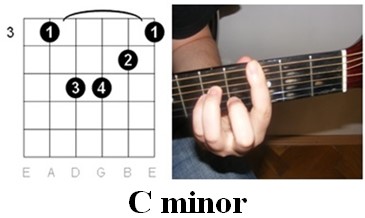

The D major and D minor chords
D major chord
The D major chord is a bright and uplifting chord that is fundamental for guitarists of all levels. Known for its vibrant and resonant sound, D major is widely used in genres like folk, rock, country, and pop. Its straightforward finger positioning and cheerful tone make it a favorite for beginners and a vital part of countless popular songs.
The D major chord is played by pressing down on specific frets of the high strings, creating a compact and accessible shape that sounds rich and full. Learning this chord is excellent for improving finger dexterity and mastering chord transitions, as it frequently appears in common chords like G, D, and A.
As you incorporate the D major chord into your playing, you will discover its versatility in crafting melodies, rhythms, and harmonies, making it an indispensable addition to your guitar toolkit.
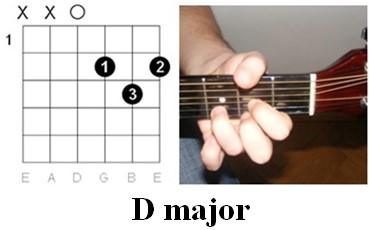

D minor chord
The D minor chord is a soulful and expressive chord that adds a touch of melancholy and depth to your guitar playing. Its haunting, evocative sound makes it a favorite in genres such as blues, classical, and ballads, where emotion and nuance are key. For beginners, the D minor chord is an excellent introduction to minor chord shapes and their distinct tonal qualities.
Playing the D minor chord involves pressing down on specific frets of the high strings, creating a compact shape that is both accessible and rewarding to learn. While its positioning may feel unfamiliar at first, regular practice will help you achieve smooth and consistent transitions.
The D minor chord pairs beautifully with major chords to create dynamic progressions and emotive melodies. Mastering it will not only expand your chords vocabulary but also bring a new layer of emotional expression to your playing.
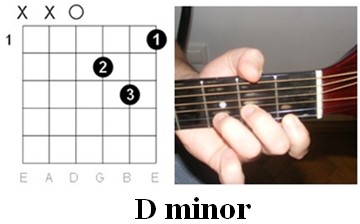

The E major and E minor chords
E major chord
The E major chord is a fundamental chord that every guitarist should know. With its bold and resonant sound, it serves as the backbone for countless songs across genres like rock, blues, pop, and country. The E major chord is not only versatile but also relatively easy to learn, making it a perfect choice for beginners starting their guitar journey.
This chord is played using an open chord shape, utilizing open strings to create a full and vibrant sound. Its straightforward finger placement allows you to focus on building finger strength and developing smooth transitions to other chords. As you practice the E major chord, you’ll notice how often it appears in popular progressions, making it a crucial addition to your repertoire.
The E major chords bright and powerful tone brings energy to any song, making it an essential building block for your musical foundation.
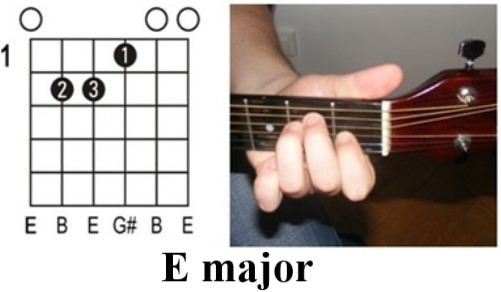

E minor chord
The E minor chord is one of the simplest and most essential chords for guitarists, especially for beginners. Its dark, rich, and moody tone makes it a favorite in many genres, including rock, folk, blues, and pop. As one of the easiest chords to learn, the E minor chord is often one of the first introduced to new players, offering a quick sense of accomplishment and confidence.
To play the E minor chord, you only need two fingers, making it a great starting point for developing finger strength and accuracy. Its open shape utilizes all six strings, creating a full, resonant sound that adds depth and emotion to any song.
The E minor chord frequently appears in popular progressions, making it an invaluable part of your guitar toolkit. As you master it, you’ll unlock a world of songs and progressions to explore.
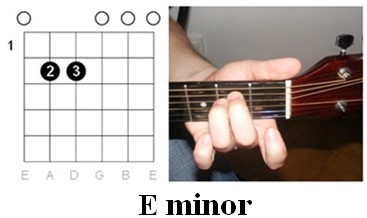

The G major and G minor chords
G major chord
The G major chord is one of the most iconic and essential chords for guitarists of all levels. Known for its bright, full-bodied sound, the G major chord is a cornerstone in a wide range of music genres, including pop, rock, country, and folk. Its versatility and cheerful tone make it a favorite in countless popular songs.
For beginners, the G major chord is an excellent choice for building finger dexterity and mastering the basics of guitar playing. While its shape requires some stretching across the fretboard, consistent practice makes it easy to play. The G major chord also involves all six strings, creating a rich and harmonious resonance that elevates your playing.
As a foundational chord, G major frequently appears in common progressions, often paired with C, D, and E minor guitar chords. Mastering it will open the door to endless musical possibilities.
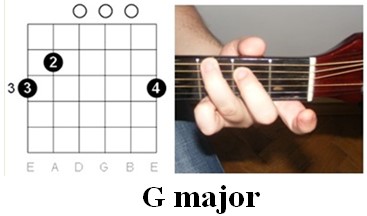

G minor chord
The G minor chord is a deeply emotive and powerful chord that brings a touch of mystery and introspection to your guitar playing. Known for its moody, melancholic tone, the G minor chord is a favorite in genres like blues, classical, and alternative rock, where emotional depth and texture are essential.
For beginners, the G minor chord introduces the concept of barre chords, which are key to unlocking a wide range of musical possibilities. While it may feel challenging at first, practicing the G minor chord helps develop finger strength, precision, and endurance. The chord’s shape, played on the third fret, creates a rich, resonant sound that complements both major and minor progressions.
Mastering the G minor chord allows you to explore more complex and expressive songs, adding variety and depth to your growing repertoire as a guitarist.
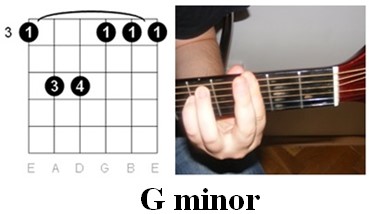

Getting to know the world of barre chords
Barre chords are a fundamental element of guitar playing, allowing you to play almost any chord across the entire neck of the guitar. Mastering the barre technique will allow you to easily switch between different chords and play many different styles of music. The basis of barre chords is that you hold down an entire fret with your index finger, thereby sounding each string at the same time in a specific place. At first, the technique can be challenging, as stronger fingers are needed to make the notes come out clearly. However, it gets easier with practice and gives you a lot more freedom to play.
The advantage of barre chords is that you can play the same chord anywhere on the guitar, thus expanding your musical possibilities. F major, B major, and G minor chords are all examples of how you can shape your playing style with the barre technique. When learning, it is important to be patient and go step by step. Refinement of finger techniques and clarity of sounds both contribute to becoming a confident guitarist. We already met the C minor and G minor chords above; now we present a couple of very frequently used T barre chords.
The F major and F minor chords
F major chord
The F major chord is a foundational chord that every guitarist should learn, known for its bright and resonant sound. It frequently appears in many genres, including pop, rock, and classical music, making it an essential addition to your chord repertoire.
While the F major chord is a bit challenging for beginners, as it often requires the use of a barre shape, it’s a valuable stepping stone for developing finger strength and precision. The chord can be played in a full barre form or as a simplified version, depending on your skill level, making it adaptable to your progress.
Mastering the F major chord unlocks access to countless songs and chord progressions, enhancing your ability to play more complex pieces. With consistent practice, it will become a versatile tool in your musical toolkit, adding brightness and harmony to your playing. You will have the chance to practice this guitar chords in our Magic Chords songbook.
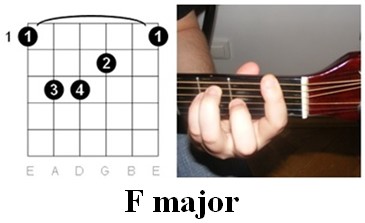

F minor chord
The F minor chord is a deeply emotional and evocative chord that adds richness and depth to your guitar playing. Its somber, melancholic tone makes it a favorite in many genres, such as rock, blues, and classical music. The F minor chords unique sound allows it to create a sense of tension and drama, making it an essential part of more complex musical expressions.
For beginners, the F minor chord can be a challenge as it is typically played as a barre chord on the first fret. This requires pressing down multiple strings with your index finger, which may initially feel difficult. However, mastering this chord is a rewarding achievement, as it develops finger strength, precision, and dexterity.
Once you’ve become comfortable with the F minor chord, you’ll find it frequently appearing in both minor and major progressions. It opens the door to many more advanced songs and musical possibilities.
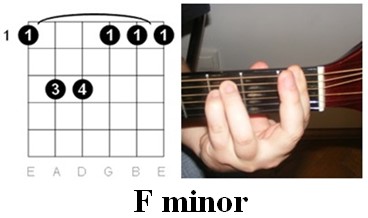

The B major and B minor chords
B major chord
The B major chord is a vital chord for any guitarist, known for its bright, full sound that adds energy and harmony to your playing. While it is a bit more challenging for beginners due to its barre chord shape, mastering the B major chord is a significant step in advancing your guitar skills.
To play the B major chord, you’ll need to press down multiple strings with your index finger while positioning your other fingers on the fretboard. This barre chord shape, played on the second fret, requires finger strength and precision, which makes it an excellent exercise for developing your technique.
The B major chord frequently appears in popular songs and common progressions, often paired with A major, E major, and F major chords. Once you’ve mastered the B major chord, it opens up a wide range of songs and musical styles, making it an essential addition to your guitar repertoire.
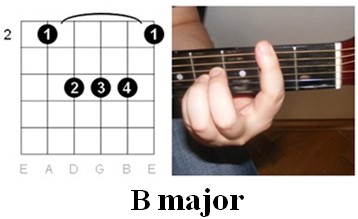

B minor chord
The B minor chord is a powerful and emotionally charged chord that adds depth and richness to your guitar playing. Known for its somber and introspective tone, the B minor chord is a staple in many genres, including rock, pop, blues, and folk music. It conveys a sense of melancholy and tension, making it essential for creating dynamic musical progressions.
For beginners, the B minor chord can be challenging as it is typically played as a barre chord, requiring you to press down on multiple strings across the second fret. This may feel difficult at first, but with consistent practice, you will develop finger strength, dexterity, and control.
Mastering the B minor chord expands your ability to play more complex songs and progressions. It pairs well with major chords like B major and E major, helping you create more varied and emotionally resonant music.
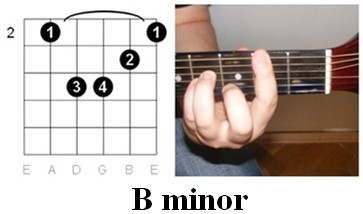

Using the 7th chords
7th chords in guitar playing give the music a special sound and are essential in many styles of music. In addition to traditional basic chords, 7th chords (for example, C7, G7, A7) enrich the harmony and provide a more colorful and dynamic sound. 7th chords have a special role in the genres of blues, jazz, and rock, but they are also common in other styles. Learning 7th chords is an important step in the development of advanced guitarists, as these chords allow you to expand your musical expression and help create different musical moods.
In the case of such chords, compared to traditional major or minor chords, an extra note enters the harmony, which creates a closer connection between the tones. Practicing 7th chords can be unusual at first as it requires new finger positions and grips. However, patience and perseverance will pay off, and soon you will have the opportunity to add these chords to your musical repertoire. 7th chords are essential for all guitarists to progress!
Below you will find illustrations of the most important 7th chords. Thank you for being here, I wish you much success with your learning and practice!
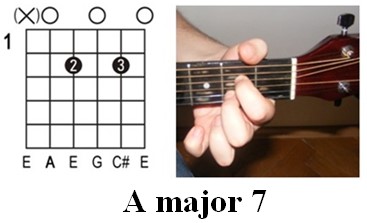

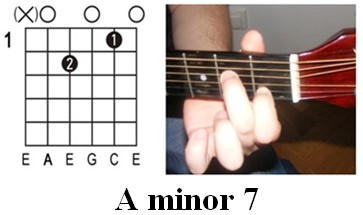

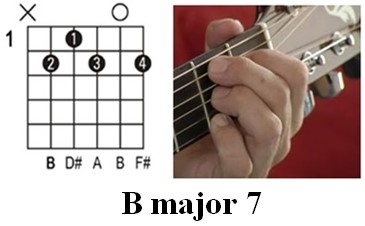

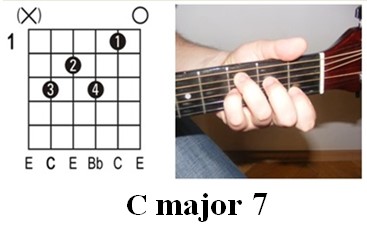

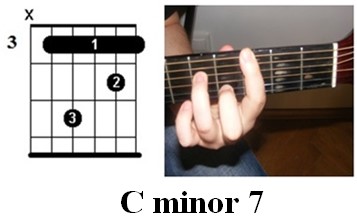

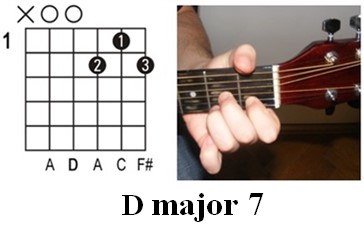

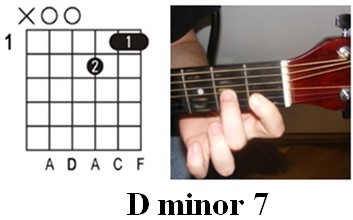

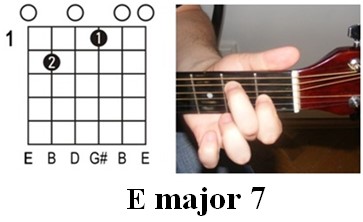

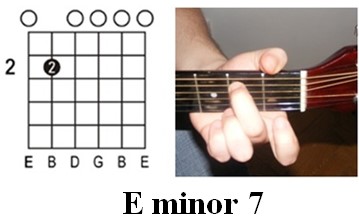

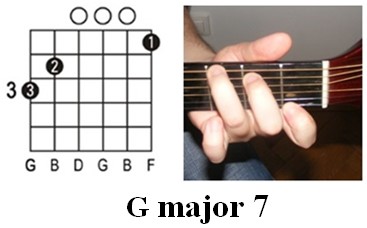

magicchords.com
2024


Lessons
Explore easy guitar chords with tips and lessons for beginners.










